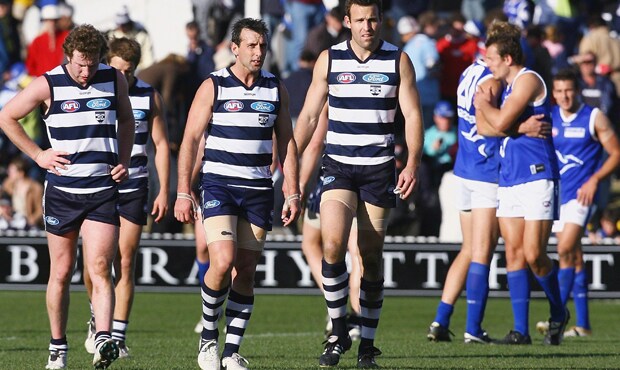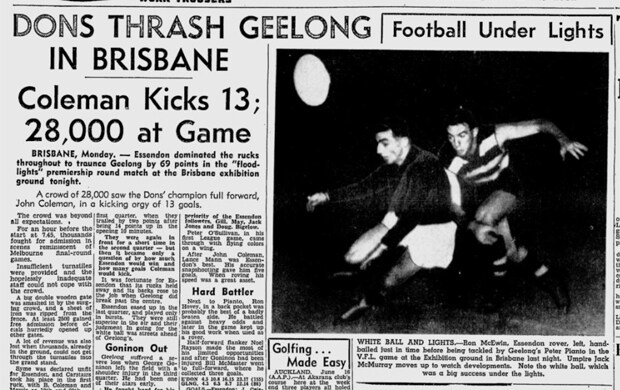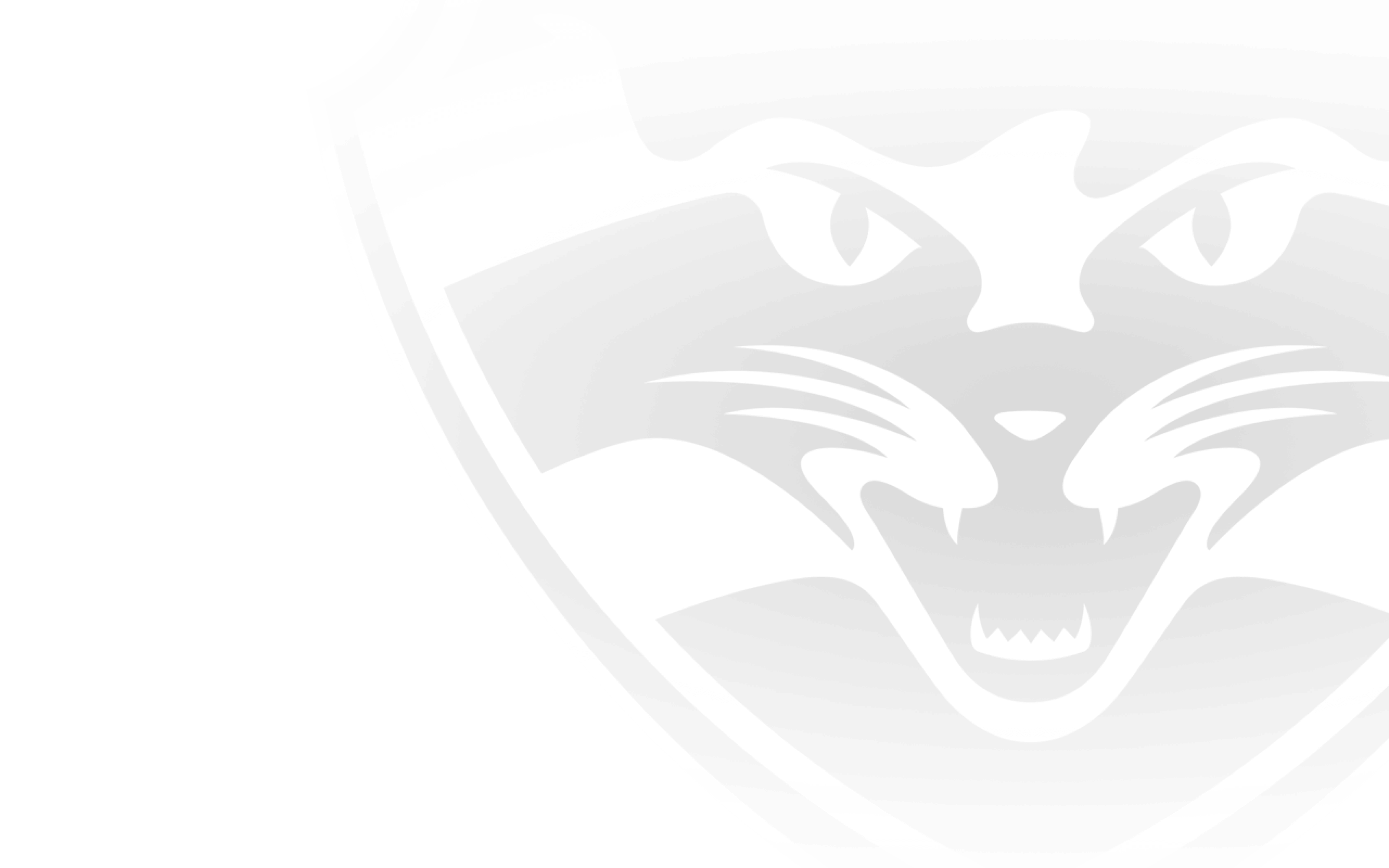1. Round 18, 2014, Skoda Stadium:
Geelong 13.16 (94) def Greater Western Sydney 12.15 (87)
Okay, so Skoda Stadium, which was the venue for the baseball at the 2000 Olympics, isn't exactly an off-beat ground, given it is now a regular on the AFL fixture. But we needed to mention this weekend's opponent, Greater Western Sydney. The Cats played the Giants for the first time at Skoda Stadium in 2013, running out 59-point winners. But last year's contest was much closer, with Geelong scraping home by seven points after receiving a major scare from the boys in orange.
Cats great Cameron Mooney won't look back at this match in our next episode of Thirsty Camel Throwback Thursday. But he will look at Geelong's first match against the Giants, which took place in round 10, 2012.
2. Round 17, 2006, Manuka Oval:
Geelong 8.12 (60) def by North Melbourne 13.12 (90)
This weekend the Cats travel to Canberra, where they have previously played two home and away matches, losing both of them to North Melbourne. This particular game, which took place in 2006, came during a form revival for Geelong. They went into the contest on the back of three wins on the trot, only to be beaten by five goals before a crowd of just under 10,000. Nathan Thompson was among the match-winners for the Roos, booting 4.4, while Jimmy Bartel (25 disposals) led the way for the Cats in the middle and Brad Ottens kicked three goals.
 Steve Johnson, Peter Riccardi and Brad Ottens after the loss to North Melbourne in Canberra in 2006 (AFL Photos)
Steve Johnson, Peter Riccardi and Brad Ottens after the loss to North Melbourne in Canberra in 2006 (AFL Photos)
3. Round 3, 1965, Coburg Oval:
Geelong 14.14 (98) def North Melbourne 7.13 (55)
VFL matches were played at Coburg Oval for just one season in 1965 after North Melbourne relocated to the venue in what was supposed to be a long-term move. The plan was for the Roos to merge with the Coburg footy club and become a powerhouse in the northern suburbs. But relations between the Coburg people and their North counterparts quickly soured and the Roos ended up heading back to their old base, the Arden St Oval, the following year. The Cats made just one trip to Coburg, and it was a happy one, with the visitors scoring a comfortable win before a crowd of more than 17,000. Young Gareth Andrews looked the goods up forward for Geelong, kicking 4.5, while Billy Goggin was best on ground.
4. Round 8, 1952, Brisbane Exhibition Ground:
Geelong 12.14 (86) def by Essendon 23.17 (155)
In an effort to popularise Aussie Rules, the VFL scheduled a round of the 1952 season to be played away from traditional venues. Richmond and Collingwood played at the SCG, Fitzroy and Melbourne at North Hobart Oval, South Melbourne and North Melbourne at Albury Sports Ground, Footscray and St Kilda at Yallourn in Gippsland, Carlton and Hawthorn at Euroa and Geelong and Essendon at the Brisbane Exhibition Ground. The game between the Cats and Bombers, which was played under lights with a white football, was supposed to take place on a Saturday night but was postponed to Monday night after bad weather left the ground in a poor state. Despite the change, 28,000 people turning up to see the rescheduled contest. Although Geelong was missing a couple of its best players due to a state game the same weekend, the result was considered a major boilover. Afterall, the Cats were the reigning premiers. But the Bombers defied the odds and won by 69 points. Essendon full-forward John Coleman was the star of the show, booting 13 goals, the equal-second-best haul of his 98-game career. The Bombers later missed the finals.

The match report on Geelong's loss to Essendon in Brisbane that was published in The Age newspaper
5. Round 4, 1932, Motordrome (Olympic Park):
Geelong 20.13 (133) def Melbourne 14.11 (95)
In 1932, while the MCG was being resurfaced, the Demons played three home games at a venue in the precinct that became known as Olympic Park. The venue, which is in roughly the same place as Collingwood's training ground stands today, was surrounded by a speedway track, hence its name. The playing field inside the track had been used for soccer matches and three VFA Grand Finals in the late 1920s. The Cats enjoyed a happy visit to the ground, kicking eight goals to one in the first quarter and never looking back from there. An estimated crowd of around 7000 saw Bill Kuhlken kick six goals for Geelong and George Moloney five.


